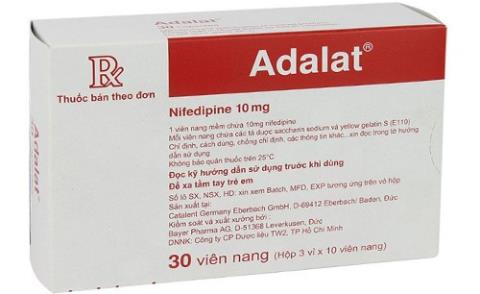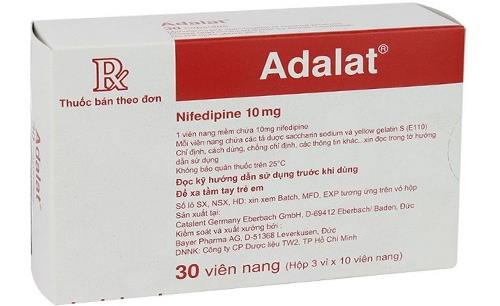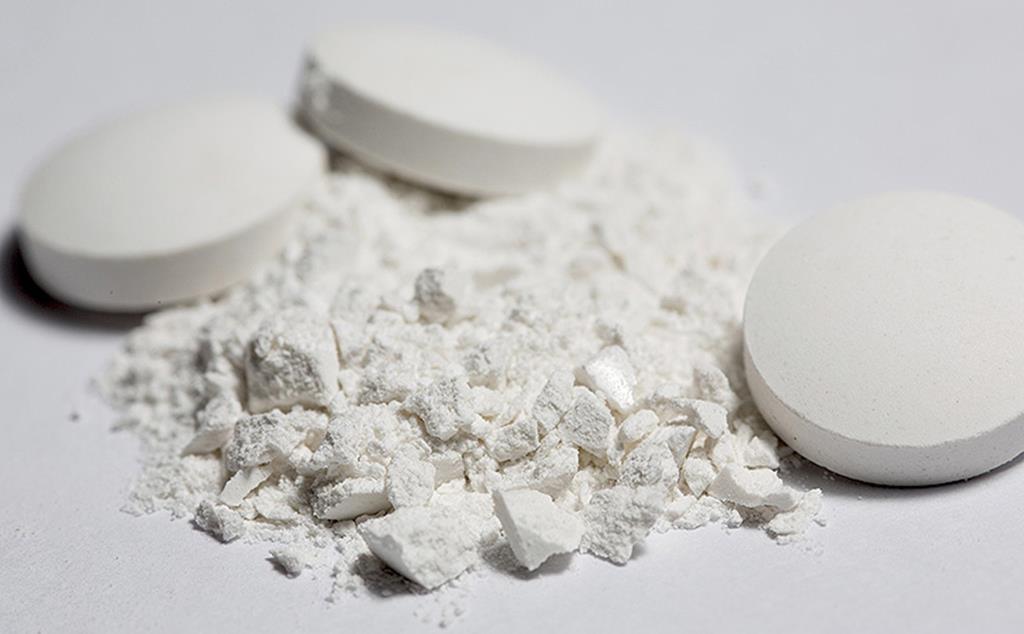Nifedipine (Adalat): Uses, uses and side effects

Nifedipine is a medication used to treat hypertension and prevent angina in adults. So what other effects does nifedipine have? What is the correct way to take the medicine and what are the side effects? Are there any precautions when using nifedipine? Let's find out with SignsSymptomsList what nifedipine is through the following article.
Name of the active ingredient of the drug: Nifedipine
Similar brand names: Adalat, Nifedipine Stada
content
- What is nifedipine (Adalat)?
- What are the uses of nifedipine (Adalat)?
- Contraindications
- How much does nifedipine (Adalat) cost?
- Dosage of nifedipine (Adalat)
- How to take nifedipine (Adalat)
- What you need to know when taking nifedipine (Adalat)
- Side effects of nifedipine (Adalat)
- Does nifedipine affect pregnant and nursing women?
- Drug interactions
- What to do if you miss a dose of nifedipine?
- How to store Nifedipine?
What is nifedipine (Adalat)?

Nifedipine (Adalat)
Nifedipine is a medication used to treat hypertension and prevent angina in adults. Nifedipine works by dilating blood vessels, helping to reduce blood pressure in the arteries, increase blood flow to the heart, so it has the effect of lowering blood pressure and anti-anginal effects.
What are the uses of nifedipine (Adalat)?
Nifedipine is indicated for:
- Treatment of high blood pressure
- Prevention of angina pectoris
- Used to treat Raynaud's disease (ischemic disease of the extremities).
You can learn more: Angina: Things to prepare before the examination
Contraindications
- Do not use nifedipine (Adalat) in case of hypersensitivity to nifedipine or any of its excipients.
- Adalat capsules must not be used in cases of cardiovascular shock.
- Rapid-release nifedipine is contraindicated in unstable angina and after acute myocardial infarction within the first 4 weeks.
- Contraindicated in patients with severe aortic stenosis , acute porphyria. Due to the presence of peppermint oil, Adalat 10mg should not be administered to patients with bronchial asthma or other respiratory conditions associated with marked overreaction of the airways.
How much does nifedipine (Adalat) cost?
The price of nifedipine 10mg ranges from 600,000 to 650,000 VND/ Box of 3 blisters x 10 tablets.
The price of nifedipine stada 20mg ranges from 60,000 to 70,000 VND/ Box of 10 blisters x 10 tablets
Dosage of nifedipine (Adalat)
Dosage may vary depending on the case
- Dosage for treatment of hypertension: The usual dose is 1 tablet, 2 times a day.
- Dosage for prevention of angina pectoris: The usual dose is 1 tablet, 2 times a day.
The above dosage is for reference only, but it is necessary to take the correct dose as prescribed by your doctor.
How to take nifedipine (Adalat)

Do not crush or chew the medicine when taking it
- The drug is taken orally directly with plenty of water
- Do not use by crushing or chewing the tablet
- Patients should not stop taking nifedipine suddenly, as stopping suddenly could make their condition worse.
- If you are being treated for blood pressure, continue using this medicine even if you feel normally well. Medications to treat high blood pressure need to be taken regularly and for life.
You can learn more: High blood pressure and frequently asked questions
What you need to know when taking nifedipine (Adalat)
Situations in which the use of the drug must be discontinued
- After use, there are signs of ischemic pain or worsening chest pain
- Using drugs for people with heart failure makes heart failure worse
In case it is necessary to reduce the dose of the drug
- Liver and kidney damage
- Patient with diabetes
Side effects of nifedipine (Adalat)
Some common side effects of nifedipine are:
- Causes excessive lowering of blood pressure.
- Swollen ankles
- Hot red face
- Headache, fatigue, dizziness
- Palpitations, heart palpitations
- Allergic reactions such as itching, hives, and rash may occur

Medicines can cause headaches after taking
Does nifedipine affect pregnant and nursing women?
For pregnant women
There is no human clinical evidence for the effect of nifedipine in pregnant women. However, to be on the safe side, only use nifedipine for pregnant women when absolutely necessary under the direction of a doctor.
For lactating women
Nifedipine is present in breast milk in high concentrations. Therefore, women who are breast-feeding should not use nifedipine or if a woman is taking the drug, breast-feeding should be discontinued.
Drug interactions
When used with certain drugs that can increase or decrease the therapeutic effect of nifedipine, it is important to inform your treating doctor of all medicines that you are taking so that he can prescribe the most appropriate treatment, for example example:
- Digoxin: treatment of cardiovascular disease
- Theophylline: in the way respiratory disease
- Phenytoin: treatment of epilepsy
- Diltiazem: antihypertensive drug
- Aspirin , Ticlodipine: antiplatelet drugs
- The antibiotic rifamycin
What to do if you miss a dose of nifedipine?
- Take the missed dose as soon as you remember
- Skip the missed dose if it is almost time for the next dose. Do not make up for the missed dose. Take the next dose as usual
How to store Nifedipine?
- Store at room temperature (below 30oC) in the whole capsule, tightly closed vial
- Keep out of reach of children.
Nifedipine is a drug used to treat high blood pressure and prevent angina. The use of nifedipine requires a doctor's prescription, avoiding the abuse of self-medication. Although SignsSymptomsList has provided information about what nifedipine is, you need to follow your doctor's advice when using it. During use, if there are any abnormal signs, please immediately contact a specialist for advice.
Pharmacist Nguyen Thi Cam Van